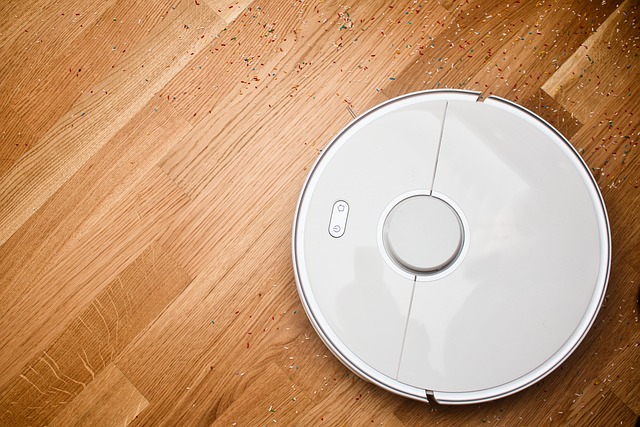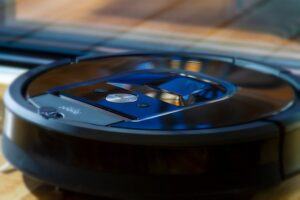Are you curious about the erratic movements of robot vacuums? Do you wonder why they seem to dart around your home in a seemingly haphazard manner? In this blog post, we will delve into the fascinating world of robot vacuum technology and explore the reasons behind their seemingly random movements.
We’ll uncover the science and engineering behind the navigation systems of robot vacuums and how they make decisions about where to clean. Additionally, we’ll discuss the challenges these devices face in navigating different types of environments and the trade-offs between efficiency and thorough cleaning.
Furthermore, we’ll address common misconceptions about their movements and provide insights into how this seemingly random behavior is actually a carefully calculated strategy. By the end of this post, you’ll have a comprehensive understanding of why robot vacuums move the way they do, and you may even gain a newfound appreciation for the complexity of their operations.
How Do Robot Vacuums Navigate?
Robot vacuums navigate using a combination of sensors, software, and algorithms to move around a space. They typically employ infrared sensors, laser sensors, bump sensors, and sometimes even cameras to detect obstacles and map out their surroundings. These sensors allow the robot vacuum to determine its position and avoid collisions as it cleans.
The navigation system uses algorithms to interpret the sensor data and make decisions about where to move. These algorithms can vary from simple random movement patterns to more advanced mapping and path-planning algorithms. Despite appearing random to human observers, the robot vacuum’s movements are actually carefully calculated based on the data it collects.
The challenge for robot vacuums is to efficiently cover an entire area while avoiding getting stuck or missing spots. This requires sophisticated software that can adapt to different environments and obstacles. While the movements may seem haphazard, they are designed to ensure thorough coverage and efficient cleaning.
Robot vacuums may appear to move randomly because they prioritize coverage over a systematic cleaning pattern. This approach allows them to cover a larger area in a shorter amount of time, making them more efficient cleaners. Understanding the science and engineering behind robot vacuum navigation can help users optimize their cleaning routines and make informed decisions when choosing a robot vacuum for their home.
What Technology Enables Random Movement in Robot Vacuums?
Robot vacuums move randomly due to the use of various technologies such as infrared sensors, bump sensors, and software algorithms. These technologies work together to enable the robot vacuum to navigate and clean a space efficiently.
Infrared sensors help the robot vacuum detect obstacles and navigate around them by emitting and receiving infrared light. Bump sensors allow the robot vacuum to sense physical contact with objects and change direction to avoid collisions.
Additionally, robot vacuums use software algorithms to process the information gathered by the sensors and make decisions about how to navigate the cleaning area. These algorithms enable the robot vacuum to move in a seemingly random pattern while effectively covering the entire space.

Are There Benefits to Random Cleaning Patterns in Robot Vacuums?
Random cleaning patterns in robot vacuums may seem counterintuitive, but they actually offer several advantages. Firstly, by moving in a random pattern, robot vacuums can cover the entire area without missing spots, ensuring a more thorough clean. Additionally, this approach allows robot vacuums to navigate around obstacles and furniture more efficiently, ultimately saving time and maximizing cleaning effectiveness.
Moreover, the random movement pattern enables robot vacuums to adapt to different room layouts and sizes, making them versatile for various home environments. Furthermore, by constantly changing direction, robot vacuums can prevent wear and tear on specific parts, leading to a longer lifespan for the device.
Challenges of Random Navigation in Robot Vacuums
One of the main challenges of random navigation in robot vacuums is the lack of systematic coverage. This can result in some areas being cleaned multiple times, while others may be completely missed. Another challenge is the potential for inefficiency, as the robot may spend unnecessary time navigating areas it has already cleaned, leading to longer cleaning cycles and higher energy consumption.
Furthermore, random navigation can lead to a lack of predictability in cleaning patterns, making it difficult for users to estimate the time it will take for the robot to complete its cleaning cycle. This unpredictability can be frustrating for users who prefer a more structured and organized approach to cleaning. Additionally, random navigation may not be as effective in larger spaces, as the robot may struggle to efficiently cover the entire area within a reasonable timeframe.
Moreover, random navigation can result in the robot vacuum repeatedly bumping into obstacles and furniture, potentially causing damage to both the robot and the objects in its path. This can lead to increased wear and tear on the robot vacuum and may also result in damage to furniture and other items in the home. Another challenge is related to the lack of adaptability to different floor types and room layouts, as random navigation may not be as effective in navigating complex or cluttered spaces.
Additionally, random navigation can be less suitable for households with specific cleaning needs, such as pet owners or allergy sufferers, as it may not consistently target areas with higher concentrations of pet hair or allergens. This can result in less effective cleaning in these areas, potentially impacting the overall cleanliness of the home. Lastly, random navigation may not be as compatible with advanced features such as room mapping and virtual boundaries, limiting the capabilities of the robot vacuum in more complex cleaning scenarios.
Optimizing Cleaning Efficiency with Random Movement
Robot vacuums optimize cleaning efficiency through their random movement patterns by covering the entire floor space, reaching areas that might be missed by a systematic cleaning pattern.
This random movement allows the robot vacuum to adapt to the layout of the room, ensuring that it can navigate around obstacles and clean hard-to-reach spots effectively.
By moving in a random pattern, robot vacuums can avoid repeatedly cleaning the same areas, thus maximizing cleaning efficiency across the entire space.
Additionally, the random movement enables the robot vacuum to clean more thoroughly by reaching into corners and along edges, where dirt and debris often accumulate.
Moreover, the randomness in movement ensures that the robot vacuum can tackle diverse floor surfaces and navigate seamlessly between carpeted and hard flooring areas.
This adaptability contributes to the overall cleaning efficiency of the robot vacuum, making it suitable for a variety of home environments with different floor types.
Furthermore, the random movement of robot vacuums prevents them from getting stuck in a predictable pattern, allowing them to navigate around furniture legs and other obstacles with ease.
The ability to navigate freely and unpredictably enhances the overall cleaning performance of the robot vacuum, making it more efficient in maintaining clean floors.
In essence, the random movement patterns of robot vacuums play a key role in optimizing cleaning efficiency, making them versatile and effective cleaning tools for modern homes.
The Bottom Line: Understanding the Logic Behind Random Navigation in Robot Vacuums
Random navigation in robot vacuums may seem counterintuitive, but it serves a specific purpose in optimizing cleaning efficiency. By moving in a seemingly random pattern, robot vacuums are able to cover the entire cleaning area without missing spots. This approach ensures thorough cleaning even in complex room layouts, where a systematic back-and-forth motion may not be as effective.
Moreover, random movement allows robot vacuums to adapt to different environments and obstacles, making them versatile cleaning tools for modern homes. While it may appear haphazard, the randomness is governed by sophisticated algorithms that enable the robot vacuum to efficiently navigate and clean the space. This adaptability is essential for ensuring that the vacuum can effectively clean various areas without getting stuck or leaving parts of the room untouched.

